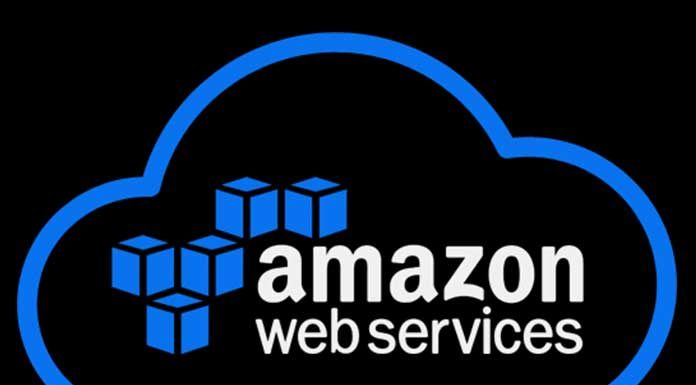AWS is the cloud infrastructure with the largest market share. One of the reasons for this is that the cloud platform offers extensive options for analysing data. In this article, we give an overview.
Amazon Web Services (AWS) offers various managed services that can be used to transfer data to the cloud and then analyse it. The main advantage of the benefits is that you do not need your hardware or software. This significantly facilitates scalability and enables optimal cost planning. Like Microsoft Azure, AWS works with a pay-as-you-go model. So only the services that companies use have to be paid for. Non-essential resources can be paused, while others can be scaled at any time to absorb peak loads.
Numerous Ways To Analyse Data In AWS
In addition to standard services such as Amazon Simple Storage Service (S3) and AWS Glue for storing data and orchestrating jobs, services such as AWS IoT are also available for connected devices to interact with cloud applications. Therefore, AWS helps with analysis and supports the transmission of data into the infrastructure and the storage of large amounts of data.
AWS Snowball helps transfer petabytes of data. Amazon Kinesis Data Firehose allows continuous loading of streaming data. You can also migrate databases to the cloud with AWS Database Migration Service. If data from the local data centre is to be analysed, scalable private connections are available via AWS Direct Connect. AWS Snowball Edge enables large moving amounts of data in and out of AWS. In this context, it is also interesting to know that AWS Lambda code can be deployed on Snowball Edge to enable the analysis of data for streams as well.
Amazon Kinesis – The Streaming Data Platform On AWS
Above all, Amazon Kinesis enables the analysis of streaming data in real-time. This can be application logs, website clickstreams, telemetry, and other data sources. Kinesis can process and analyse data as soon as it is transmitted. Kinesis can then respond in real-time. Amazon Kinesis Data Streams allows you to create applications that process or analyse streaming data. This option is also available for video data with Amazon Kinesis Video Streams.
Amazon Kinesis Data Firehose can send streaming data to Amazon S3, Amazon Redshift, Amazon Kinesis Analytics, and Amazon Elasticsearch Service for further processing. Amazon Kinesis Data Analytics lets you analyse streaming data using standard SQL.
Also Read: Supply Chains: Five Steps To Optimizing Them With Data Analytics
AWS Lambda – Run Code Serverless For Analysis
With AWS Lambda, code can run without having to provision or manage servers. AWS Lambda supports code written in Node.js (JavaScript), Python, Java, C# (.NET Core), Go, PowerShell, and Ruby.
This is helpful for the analysis since only the computing time used is calculated here. Lambda can run code for almost any type of application. The Lambda code can also be started automatically by other services, for example, to create analyses. For example, code can be triggered in Lambda based on changes in data from Amazon S3, DynamoDB, Amazon Kinesis Data Streams, Amazon Simple Notification Service (Amazon SNS), and other services.
Amazon EMR – Integrate Apache Hadoop For Analysis
Amazon EMR is a distributed computing framework for processing and storing data. It uses Apache Hadoop based on Amazon EC2 VMs. This makes it possible to utilise Hadoop tools such as Hive, Pig, Spark, and other tools for analysis in AWS.
To do this, Amazon EMR takes on all the tasks involved in providing, managing, and maintaining the infrastructure and software of a Hadoop cluster. In this way, EMR can split large amounts of data into smaller jobs and distribute them to different computing nodes in a Hadoop cluster. Amazon EMR can launch a persistent Hadoop cluster that can remain active indefinitely. It is also possible to create temporary collections that EMR terminates after the analysis.
Amazon EMR uses Amazon EC2 instances and can also rely on numerous types. This enables the cluster to be optimally scaled and the necessary configuration to be specified for optimal operation with Hadoop. When configuring EMR, you can determine which Amazon EC2 instances EMR should use to build the Hadoop cluster.
Amazon EMR is fault-tolerant to failures and will continue to run jobs if a secondary node fails. Amazon EMR can also create new core nodes if individual nodes fail. New nodes that rely on the Hadoop Distributed File System (HDFS) can be added at any time during operation. This means that the cluster can be scaled during the process. Additionally, EMR can use Amazon S3 storage service natively or with EMRFS instead of local HDFS.
AWS Glue – Extract, Transform, And Load
AWS Glue is another fully managed service on AWS. It offers a managed ETL service running in a serverless Apache Spark environment. The service can extract, transform and load data (ETL service). This makes it possible to catalogue, cleanse, enrich and move data. If ETL jobs are necessary for analysis, it makes sense to rely on Glue if it is done in AWS anyway.
AWS Glue is an entirely serverless service. It is also not necessary to create and manage virtual servers in EC2, but the service can start working immediately. The good thing about AWS Glue is that the service also works with the other analytics services in AWS. For example, Glue can also prepare data for Amazon Athena, Amazon EMR, and Amazon Redshift. Glue creates ETL code that is customizable, reusable, and portable.
Data scientists and administrators can specify the number of Data Processing Units (DPUs) that an ETL job should receive. AWS Glue connects to almost any data source. These can also be files in Amazon S3 or tables in Amazon RDS.
Also Read: Data Analytics: The Services Market Is Becoming Standardized Through Software

